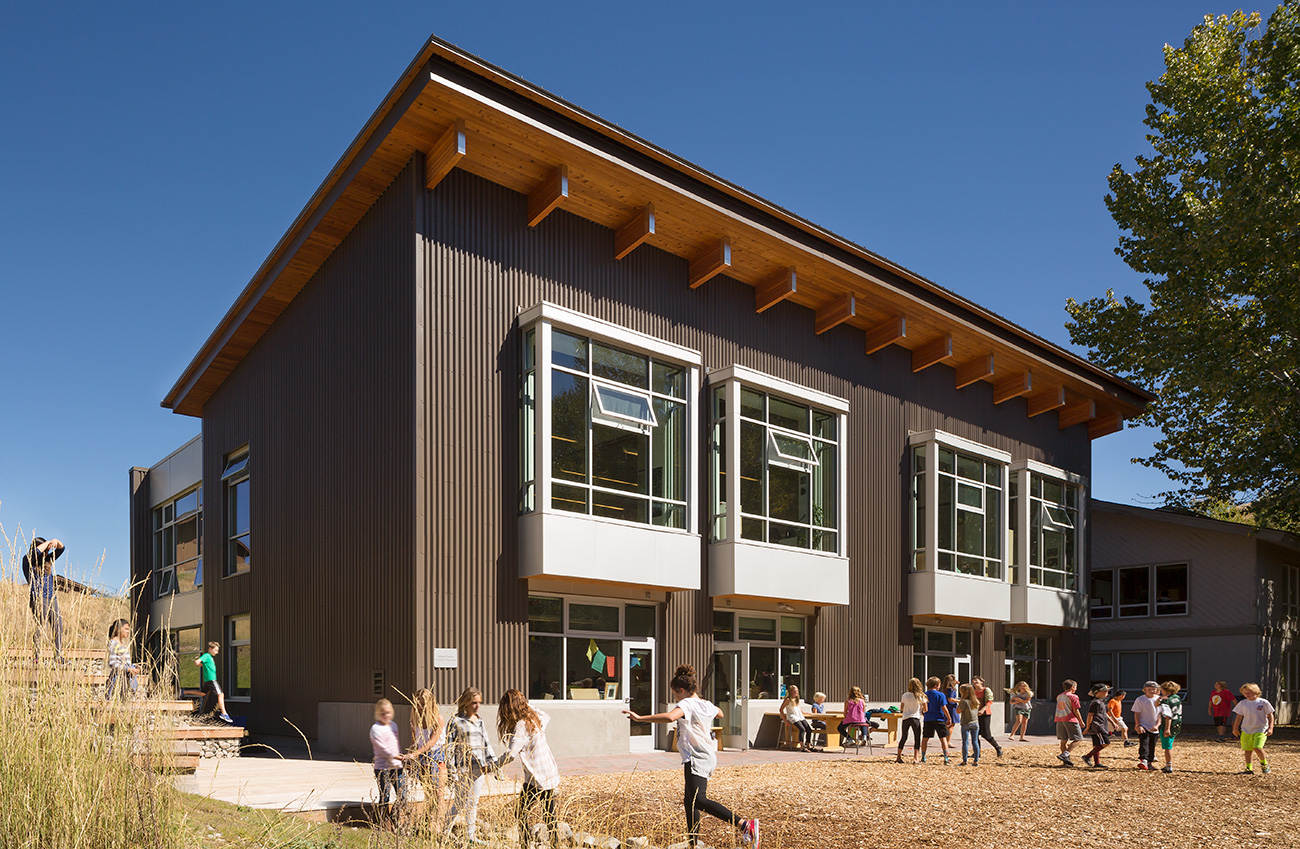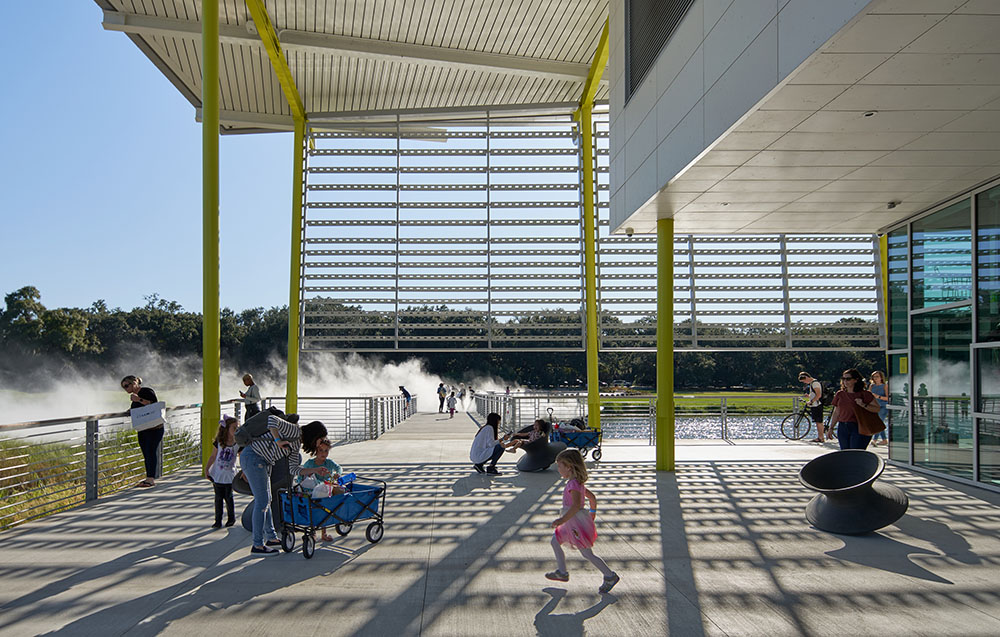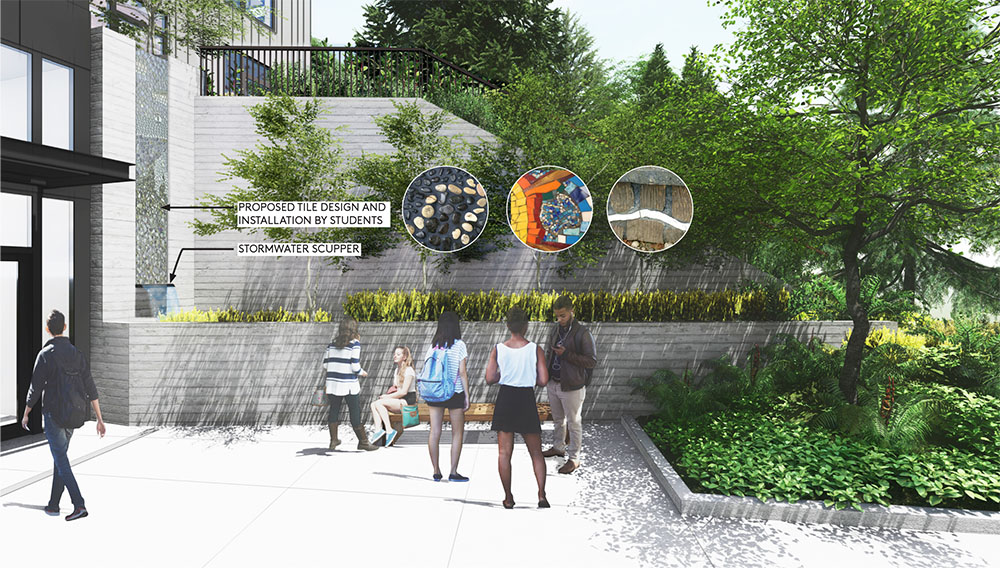Date Posted: 10.07.2020
Do experiences with nature promote learning? Until recently, claims and anecdotal observations exceeded evidence. But the field has advanced with hundreds of studies that offer converging evidence of the cause-and-effect relationship between nature and learning.
Research by educators, psychologists and social scientists alike demonstrates that outdoor learning and connections with nature boost academic learning, environmental stewardship and child development. Additional benefits range from physical fitness to stress reduction and emotional resilience, making outdoor connections an important design consideration for schools and families. All of these benefits predate the COVID-19 pandemic and will continue to be relevant to educational practice long after, but outdoor learning is experiencing a surge in attention and programmatic implementation as institutions across the country explore viable ways of returning to in-person classes during the current pandemic.
Even before the current situation, the average American child spends more time watching screens (1,200 hours per year) than in school (900 hours per year). With many West Coast schools opening in a distance learning model this fall, the need to balance expanded on-screen time with outdoor exploration is of heightened importance.
How can we strengthen outdoor learning opportunities to extend school operations and address limitations of digital learning models? Six case studies offer replicable strategies for schools from pre-kindergarten through 12th grade to enrich academic performance, maximize resilient operations and foster environmental stewardship.
Engaging Senses to Boost Cognitive Performance
Nature helps children in key areas driving academic performance: restoring attention, relieving stress, developing self-discipline and fostering creativity. Quantitative metrics include higher standardized test scores and graduation rates within experiments spanning a wide range of instructional approaches.
“In academic contexts, nature-based instruction outperforms traditional instruction,” explains Ming Kuo, Ph.D. of University of Illinois at Urbana-Champaign’s Landscape and Human Health Laboratory and lead researcher for multiple studies on the impact of nature on learning.
Located on a wooded site on Bainbridge Island, Blakely Elementary School is designed to bring nature into the learning experience through diverse outdoor environments and biophilic design strategies. Completed in fall 2019, the replacement PreK-4 school maximizes views from classrooms and the library toward an outdoor learning courtyard and forest beyond to reinforce connection to nature throughout the daily experience.

Blakely Elementary School’s central courtyard connects to shared learning areas and creates multiple opportunities for outdoor education and informal activities.
The south-facing courtyard is designed to support STEAM curriculum and features activity zones that immerse students in nature, hands-on learning and quiet study. After the district pivoted to remote learning, the courtyard easily transitioned to accommodate teachers’ distanced meetings. In fact, multiple outdoor spaces around the school have the potential for covered and uncovered informal learning experiences.
Beyond the learning courtyards, outdoor recreation areas encourage exploratory play with natural materials and forms. The landscape breaks from ‘lawn and sidewalk’ school norms to an ecologically functioning native environment with 20,000 native and drought-tolerant shrubs, perennials and grasses mixed with 300 native trees. Significant open area is restored to a native forest condition with stormwater management to protect wetlands on the site and the adjacent IslandWood environmental education campus.
Both the hardscape and natural settings are an asset for the school’s science curriculum, and for generally amplifying the capability of young minds. Research suggests that kids are more engaged in learning not only during outdoor activities but also upon returning to their classroom afterward—even if the subject they return to is not nature-related. Data from a precedent elementary school in the district, which features intentional integration of learning and nature like that at Blakely, documents fewer staff sick days, lower absenteeism and decreased student behavior issues which, in turn, has allowed the principal more time to focus on learning than discipline. Mithun’s Data Analytics team will conduct similar post-occupancy evaluation at Blakely Elementary once the school returns to on-site learning.
At Annie Wright Schools New Upper School for Boys, outdoor learning areas are smaller in scale but positioned immediately outside classrooms for easy access. This direct connectivity allows teachers to fluidly shift methodology and change atmosphere to re-energize minds, which brain science shows can increase attention. In addition, an upper division student, inspired by design workshops with Mithun architects and landscape architects, volunteered further to assist the design and planting of the raingardens that surround these learning platforms as part of his graduating project—an inspired example of integrating curriculum with independent study and hands-on exploration!

Formal and informal outdoor teaching spaces at Sun Valley Community School allowed the school to open with hybrid in-person programming through a network of interconnected, socially distanced outdoor classroom spaces during the COVID-19 pandemic.
Resilient Facilities, Resilient Learners
In addition to academic enrichment benefits, outdoor learning spaces support resilient operations and new programming opportunities during the current pandemic. Mithun incorporated dedicated outdoor classrooms at the Sun Valley Community School Hagenbuch Hall for the Creative Arts that are now providing critical capacity for on-site education while many other regional schools have transitioned to online/remote learning models. These outdoor spaces served as a catalyst for further assignment and dedication of more than 50 outdoor learning spaces around the K-12 campus, each assigned to individual educators or shared use. This network of “claimed” classroom spaces enabled the school to open on-time and in-person for fall classes, and will serve as a vital bridge for continued learning and programming at Sun Valley Community School.
After Hurricane Katrina in 2005, Louisiana Children’s Museum re-envisioned its mission to holistically address the health and development of children in a state that consistently ranked among the worst in the nation for education outcomes. The health and development benefits of intentionally connecting children with nature led the museum to relocate from an indoor-focused experience in New Orleans’ Warehouse District to a new campus encircling a lagoon in the 1,300-acre City Park. The new campus presents a transformative model for children’s museums, one that weaves together indoor and outdoor learning opportunities along with literacy, parenting, early childhood research and environmental education activities to create a holistic and supportive environment for children and their families.
After temporarily closing to traditional patronage during the pandemic, the museum has opened its doors to host Pre-K and kindergarten students from nearby Langston Hughes Academy for in-class education this fall. Although not a traditional school environment, the museum’s adaptable program spaces and flexible indoor-outdoor settings translated into an ideal educational facility for the school’s young students.

The Louisiana Children’s Museum is an eco-system of indoor and outdoor spaces with hands-on activity areas that open directly to broad covered porches that provide both shelter and serve as a launching point for explorative learning outdoors.
“To be able to use this huge space and all the resources the children’s museum has to offer is a dream come true,” Carrie Bevans, School Director at Langston Hughes Academy shared with local reporters. Julia Bland, CEO of Louisiana Children’s Museum agreed that this new partnership is a “win-win-win for the students, teachers, and the museum.”
Building Environmental Stewards and Urban Citizens
Not all schools have immediate access to forests and wetlands, but even the most urban settings afford opportunities to connect with the natural world. Located in Seattle’s First Hill neighborhood, the densely programmed Northwest School 401 E. Pike Building features a rooftop sports field, learning garden, solar thermal collection panels and “sky lab” with views across downtown, changing weather patterns and the urban tree canopy. These settings extend hand-on science exploration beyond the classroom, and invite students in grades 6-12 to engage with the school’s energy performance and the city fabric beyond.

At The Bush School, strategic integration of outdoor gathering and teaching spaces couples with a sloping topography and visible Salmon Safe stormwater design strategies.
Another urban campus, The Bush School is aiming to foster stewardship through the integration of natural materials and elements in its upper school expansion. Observation and teaching porches provide opportunities for meaningful connection with the natural and urban environment as part of the learning process. Integrated stormwater strategies on display serve as keen reminders of the watershed location of this campus and its role in habitat protection.
The Bush School will be the first school ever to receive Salmon Safe certification. Through this program, students and staff will play an active role in protecting water quality and salmon habitat, reinforcing connections between classroom learning and community ecological health. Through environmental education and stewardship programs like this, schools are able to leverage their immediate natural surroundings as learning tools, and also to bridge to larger regional ecological systems.
Looking Forward
Educational institutions that emphasize nature connections, even in the tightest of urban conditions, amplify the learning potential of their curricula and cultivate resilient learners with a greater capacity to meet challenges and thrive in adverse situations. Given the myriad cognitive, leadership and developmental benefits of nature experiences, it’s imperative that designers and educators consider the full potential of nature integration as a resource for learning. Amidst the realities of current online learning models and societal stressors, access to nature is a vital element in fulfilling the educational promise to current and future generations of learners.
This article is adapted from “Students get a boost from outdoor connections,” which originally appeared in the Daily Journal of Commerce 2020 School Design Special Section.